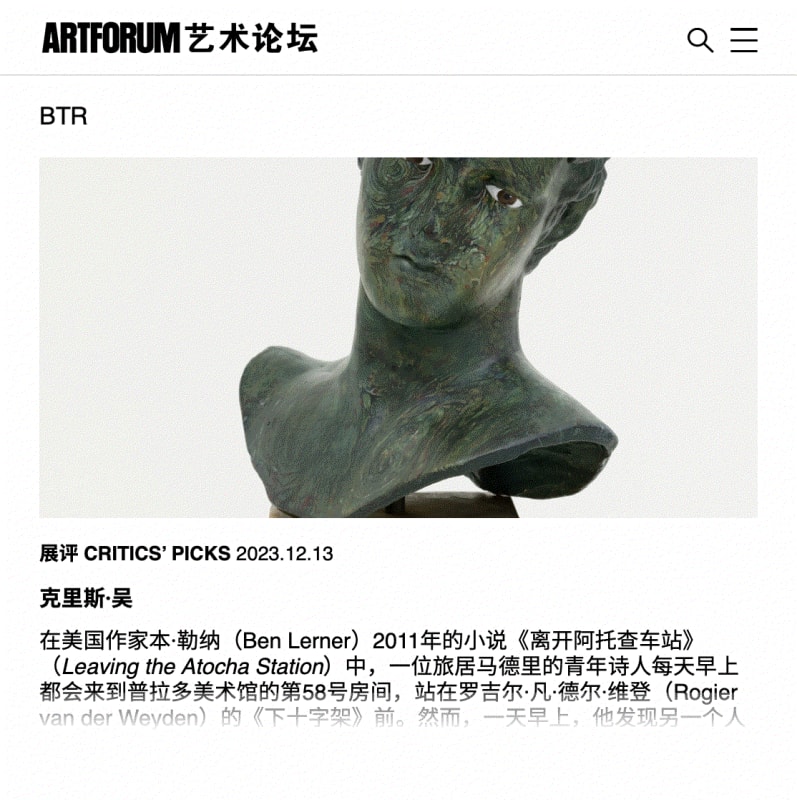In the 2011 novel Leaving the Atocha Station by American writer Ben Lerner, a young poet living in Madrid goes to Room 58 of the Prado Museum every morning to stand in front of Roger Van der Weyden's Descent from the Cross. One morning, however, he found a man taking his place. The man looked at the painting and broke into tears. “I had long worried that I was incapable of having a profound experience of art and I had trouble believing that anyone had, at least anyone I knew.” The young poet was confused, so he followed the man to Room 56. In front of Bosch’s The Garden of Earthly Delights, the man “considered it calmly, then totally lost his shit.”
Chris Oh’s solo exhibition “Passage” at Capsule Shanghai reminded me of Ben Lerner’s description of the viewer who has a profound experience of art. The artist's method of appropriating the works of the Northern Renaissance masters is completely different from the techniques of conceptual art. He does not intend to provoke questions and discussions about originality or authorship, nor does he seek to duplicate the original in facsimile; he only, almost purely out of passion for Renaissance art, deploys extraordinary talent to revitalize art history into breath-taking contemporary treasures.
In his early works, Chris Oh painted details of Renaissance scenes onto IKEA towels, rugby balls, bottoms of shoes or hubcaps, invoking conflicting perceptions through anachronism. However, in the exhibition at Capsule Shanghai, he ingeniously chooses ready-made objects that "grow over time" as his canvas, from sea fans, cicadas, emu eggs, shells, agate slices to antique burl slabs. The texture, color, shape, and even the etymology and symbolism of the material unfold this creative game that bridges the past and present.
Taking Gorgon (2023) as an example, Oh painted Leonardo da Vinci's portrait of Ginevra de' Benci on a sea fan. The sea fan belongs to the coral family of Gorgonia ventalina, which has the same affix as the Gorgons in Ancient Greek mythology. Moreover, the texture of the sea fan resembles the juniper leaves in the background of the original painting. The work is an appropriation of both form and meaning. In Fade (2023), a detail of Rogier van der Weyden's Descent from the Cross – the crying man - is painted on a slice of agate. The texture of the agate compliments the crystal quality of tears while concealing part of the figure’s curly hair, conjuring a sense of time as in a spalling mural. Several important works from Pieter Bruegel the Elder's “Months of the Year Cycle” series were painted on antique burl slabs. The irregular thickness of the burls created a subtle and uncanny change of perspective. Interestingly, Pieter Bruegel the Elder's The Harvesters (1565) not only appears in Reap (2023). The treetop in the painting is also depicted on the back and neck of an antique statue; the title of the work Chlorophyll (2023) is also a metaphor for Chris Oh's technique. Perhaps the inspiration of the old masters is the chlorophyll in Oh's creative process of "photosynthesis", bringing together notions of growth, heritage and passage.
Original text in Chinese. Translated by Capsule Shanghai.


